Masks, six feet distance, no balls or pennies, no sharing water and no tryouts or cuts are among the changes coaches, staff and players must adjust to during fall sports. The rules change frequently, but the teams they apply to remain the same. St. Louis County has established three groups: low, moderate and high frequency. Each category has different levels of restrictions based on that sport’s amount of contact.
LOW FREQUENCY
The low frequency sports are the sports with very limited contact such as cross country, swim and dive, tennis, golf and marching band. As of Sept. 10, these sports are now allowed to have competitions, but still no spectators.
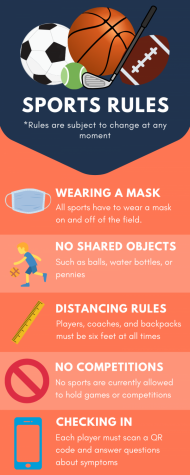
“Our drills have changed a lot. Before, I allowed players to choose their warm-up partners and court. Also, I don’t have large drills anymore. They are more one vs. one coaching drills,” girls varsity tennis coach Katelyn Arenos said.
Meanwhile in the pool, coaches have had to adapt to the new guidelines as well as to what the team members want. Some teammates do not feel that the restrictions are restrictive enough, and the coaches have to accommodate that as well.
“Everyone has a different experience with this virus and I respect that. Some of our athletes did not feel comfortable with 36 swimmers in the pool at once with three at each end,” boys varsity swim coach Coleen Sumner said. “In order to help make everyone more comfortable, we divided the practice time and swimmers into two separate practices. The divers have their own practice separate from the swimmers.”
But coaches are not the only ones getting used to how things are now, athletes are also coping with the new norms. For cross country, the teams are very large and distancing has changed what they do in practice.
“Honestly, I don’t like the rules because I hang out with some of these girls outside of practice, so we’ve already been exposed to each other. I understand why we have to follow these rules and that there’s nothing I can do about it, but it’s okay because cross country is the thing I look forward to the most each day,” freshman and cross country runner Jordyn Anderson said. “To me, the biggest challenge with following the rules is staying six feet apart. That’s especially hard while having a conversation.”
Captains’ roles have shifted as well.
“Being a captain during this crazy and unknown season has pushed me to get to know all the girls even more and hopefully remind them not to take cross country for granted in the future. It’s a great program and hopefully it stays that way after all [of] this is over,” senior and girls cross country runner Anna Butler said.
MODERATE FREQUENCY
The moderate frequency sports include cheerleading, dance, field hockey, soccer, softball and volleyball. These sports are still not allowed to compete, but athletes are deciding to take what they can get.
“We’re all okay with how the program is right now given the circumstances and are just happy to be out with everyone,” junior and boys soccer player Matthew Givens said. “What I think is our biggest challenge going forward is just to make sure everyone plays their role in keeping the program safe and able to have a season.”
Some players are taking advantage of the time because they haven’t seen their friends and teammates in so long, while acknowledging the fact that their sports could end just at the drop of a hat.
“It’s frustrating not being able to have regular practices but I am just happy to be out there playing again,” sophomore and boys soccer player Zach Boland said. “My teammates feel the same way where we are all just happy we are able to practice with everything going on right now. The biggest challenge is being patient with everything and having to wait and see if we will be able to eventually be able to play games.”
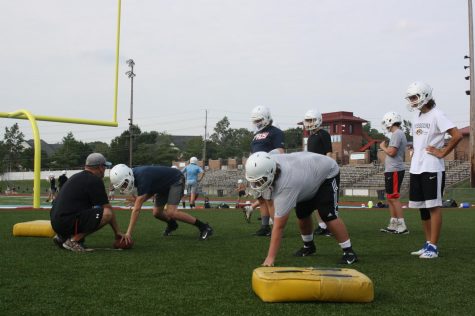
While seniors lament on their last seasons, they also recognize the leadership necessary in paving the way through these times.
“As a senior, I definitely have to set an example. My fellow seniors and I are expected to lead as a group and help anyone who needs it. I am leading more practices, making stronger connections with my coach and teammates and expressing the team’s concerns to the coach in a respectful manner,” senior and boys soccer player Brooks Parker said. “The worst part about everything so far is how quickly it could all change. One day we could be having three vs. three scrimmages and the next we could be told that the season is done because of the number of cases in the county. Everything is just so uncertain but it gives you more of a drive to be better the next day because it is not guaranteed.”
Although it has been three weeks of sports, athletes are adapting to the changes no matter the sport.
“I definitely feel that I have to lead by example because all of the underclassmen look up to us. I normally am making sure I am socially distanced and I am vocal that others should be distanced,” senior and boys soccer player Alex Lancia said.
HIGH FREQUENCY
The high frequency sports list contains only football. Because this is the highest contact high school fall sport, football coaches and players are the most restricted. Before Sept. 8, they could only work out in the weightroom in shifts. Now with the new changes, they are allowed to touch a football on the field, but still without contact, plays or games.
“It seems like things change on a daily and even hourly basis for what we can and cannot do. Right now we can only do conditioning drills with our football team,” boys varsity football coach Jeff Duncan said. “Our players are doing everything that we are asking them to do. They are making the best out of a not-so-good situation. When we are able to start back up with normal practices and look towards playing games, our kids will be ready and I am confident that they will play well.”
Junior and Cornerback Tre Bell believes County Executive Sam Page provided the restrictions and it is up to the players and coaches to follow the rules.
“These first two weeks are basically our weeks to prove to the Suburban Conference that we can follow the guidelines to have a season. If we do everything right these two weeks, then we can start playing games the first week of October,” Bell said. “Me and the guys understand we have a responsibility now and one little mistake by one player can cost us a whole season. Right now everyone is held accountable for themselves and for their brothers.”

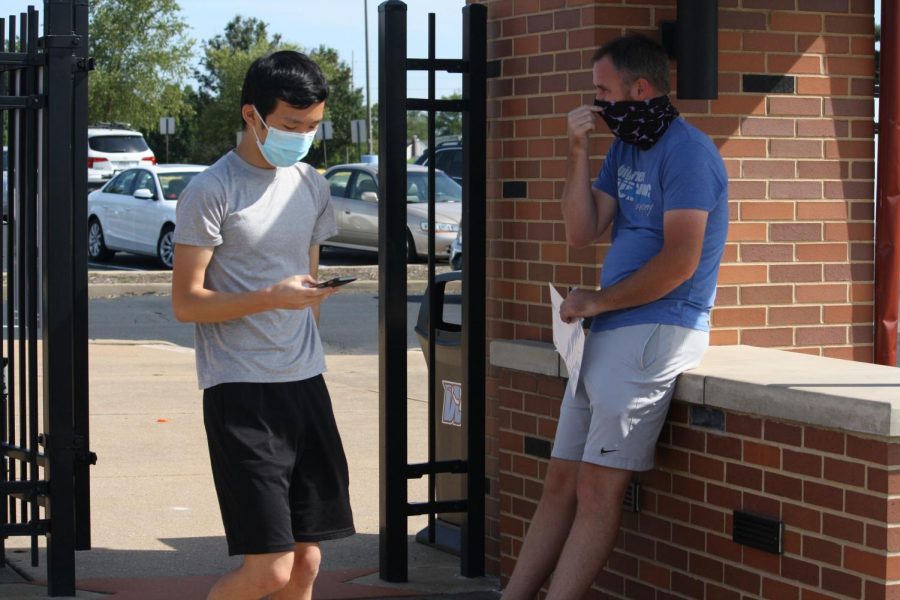

![After a thrilling point, senior Katie Byergo and junior Elle Lanferseick high-five each other on Oct. 8. With teamwork and camaraderie, Byergo worked together in the game against Lafayette High School. “[Byergo’s] is really positive with a good spirit,” Lanferseick said. “I set her [the ball] and she hits it [or] gets the kill.”](https://pwestpathfinder.com/wp-content/uploads/2025/10/DSC_9349-1-e1761159125735-1200x791.jpg)
![The varsity boys cross country team poses for a photo at the Mike Rose Soccer Complex in Memphis, Tenn. The Memphis Twilight Classic is the largest event the team attends. “[I enjoyed] hanging out with the team every day at practice,” Patten said. “I wanted to be the best I could for my team; I really wanted to help out.”](https://pwestpathfinder.com/wp-content/uploads/2025/09/XC-PHOTO-1200x822.jpg)

![Celebrating their landmark victory, the Parkway West Boys Hockey team gathers together on the ice. Over the course of the season, the team grew closer together while pursuing their final goal: winning the coveted Wickenheiser Cup. “[Winning the cup] was awesome. [As] a senior, it was super rewarding to end on a high note. It had to be the most memorable part of my career,” varsity hockey player and senior Hunter Beach said.](https://pwestpathfinder.com/wp-content/uploads/2025/03/DSC3974-Enhanced-NR-1200x799.jpg)
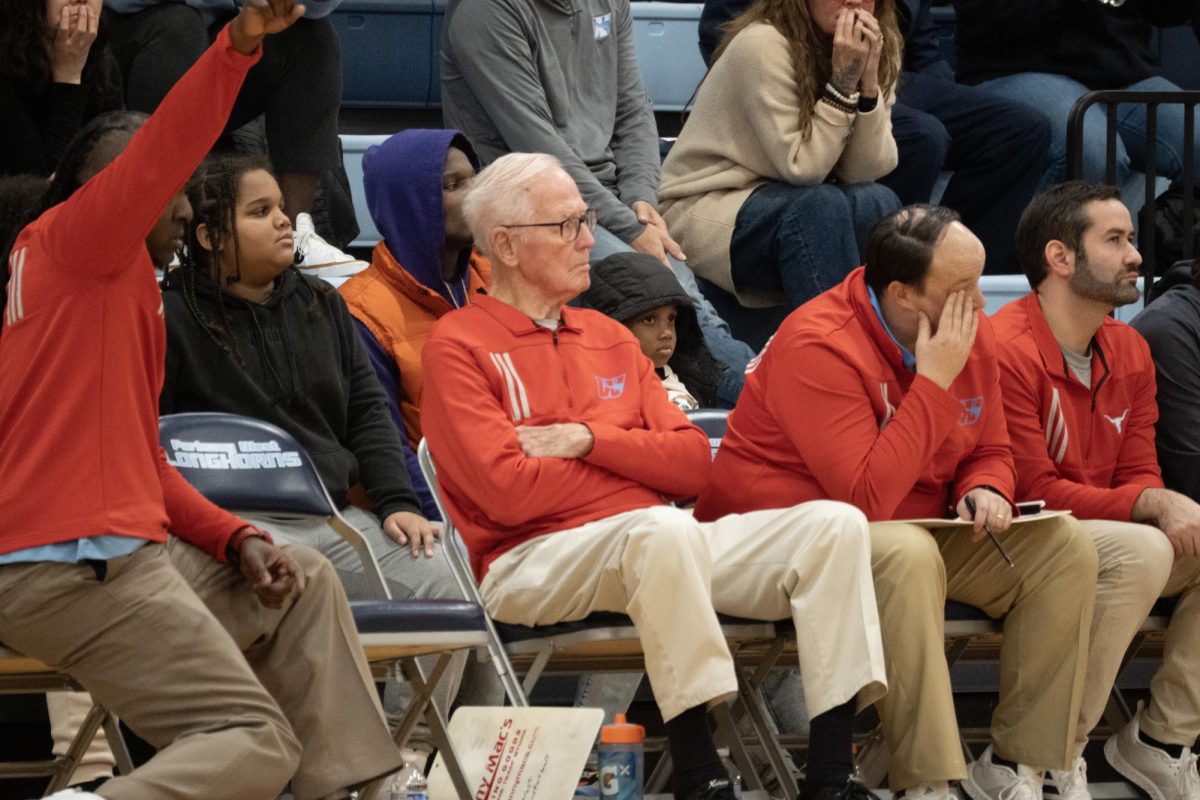
![Holding the disc, senior Nathan Thompson waits for an opportunity to pass to senior Timmy Fry. Parkway United’s ultimate frisbee team is made up of students from each of the four Parkway schools. “The one thing I really like about ultimate [frisbee] is the community because it’s so different from any other sport I've been a part of. [My] national teammates are people who we play against in the regular season, so we see each other all the time. It's always fun hanging out with [them],” Thompson said.](https://pwestpathfinder.com/wp-content/uploads/2024/12/C96A6823-1200x800.jpg)
![Senior Josie Grunzinger watches the football game intently from the sidelines on Oct. 18. Grunzinger stood out to the crowd as the only girl on the football team, encouraging other girls who want to play football to take a chance and go for a sport outside of their comfort zone. “If you think you could [play football] and you want to do it, just try it, because all it takes is to actually try it out,” Grunzinger said.](https://pwestpathfinder.com/wp-content/uploads/2024/10/Untitled-design-1200x675.png)
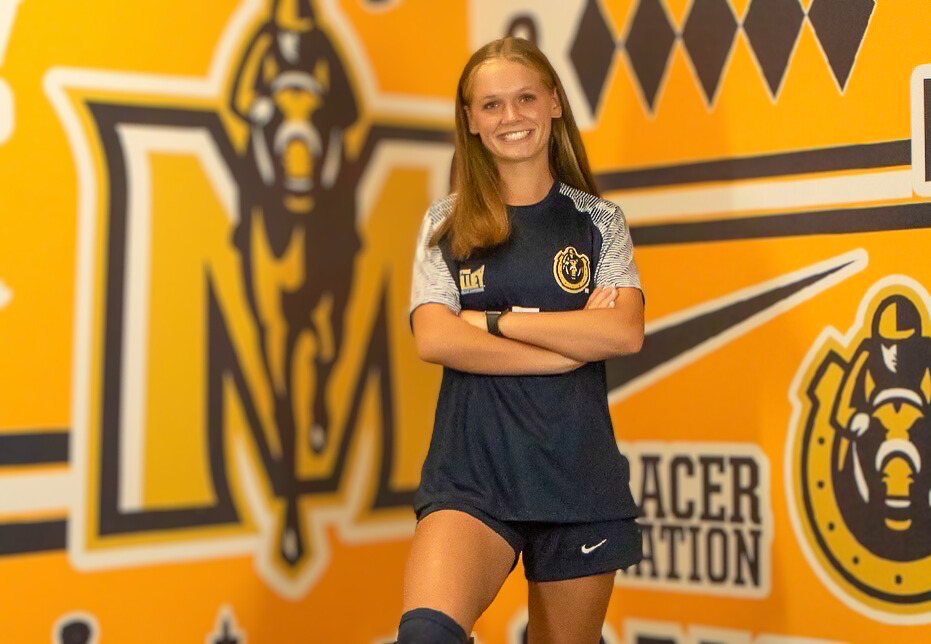
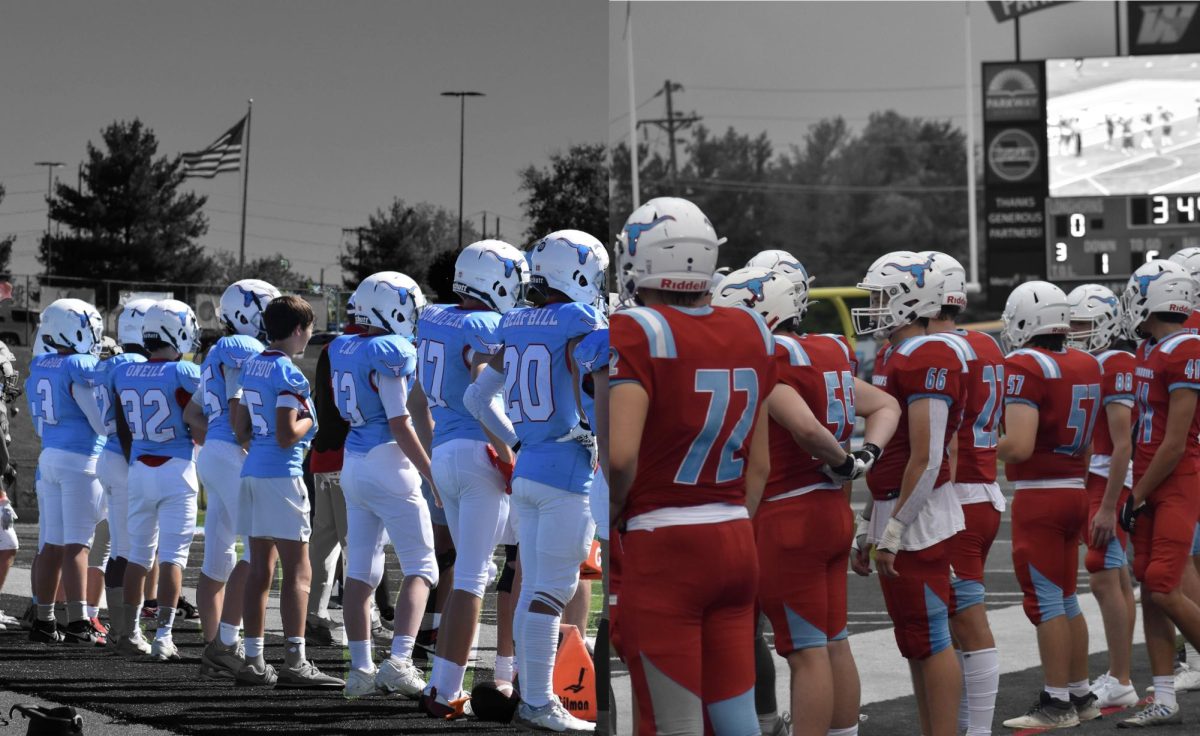
![With her arms held high, junior Jenna Rickelman throws the ball across the pool during a girls water polo practice. With hours of practice after school and over the summer, Rickelman saw many improvements in her water polo skills. “When I look at [my] stats, I'm so much better than I was last year,” Rickelman said.](https://pwestpathfinder.com/wp-content/uploads/2024/05/Untitled-design-2-.png)
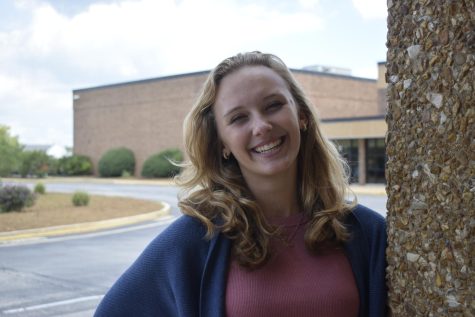
Laurel Gillespie • Sep 26, 2020 at 3:15 pm
Informative article addressing the layers of participation. Thank you for this perspective!
Nancy Ramig • Sep 21, 2020 at 11:37 am
Tough time for all participants, coaches, and parents. But things are changing everyday – so, if keeping the restrictions that are suggested speeds things up to returning to fewer restrictions – let’s do it!